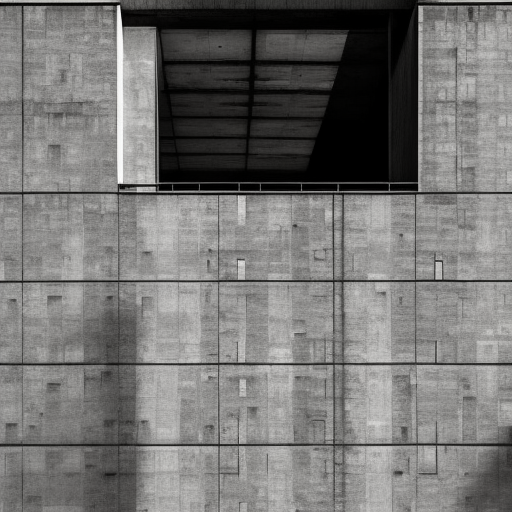Summary:
Brutalist architecture is a style that emerged in the mid-20th century and is characterized by its raw, exposed concrete structures. This architectural movement prioritizes functionality and honesty in design, often resulting in imposing and monolithic buildings. While controversial, Brutalist architecture has left a lasting impact on the urban landscape, with notable examples found worldwide.
Origins and Characteristics
Brutalism originated in the 1950s as a reaction against the ornate and decorative styles of the past. The term “Brutalism” is derived from the French word “béton brut,” meaning “raw concrete.” Architects embraced this material for its durability, affordability, and ability to create massive, sculptural forms. Brutalist buildings often feature large, block-like shapes, exposed concrete surfaces, and minimal ornamentation. The style emphasizes the expression of structure and function, with services and utilities often left exposed.
Influence and Spread
Brutalism gained popularity in the post-war era as a symbol of progress and modernity. Its utilitarian approach to design resonated with the ideals of social housing and public infrastructure. The movement spread globally, with notable examples found in Europe, North America, and beyond. Architects such as Le Corbusier, Alison and Peter Smithson, and Paul Rudolph played significant roles in popularizing Brutalism and pushing its boundaries.
Controversy and Criticism
Despite its influence, Brutalism has been a subject of controversy and criticism. The imposing and austere appearance of many Brutalist buildings often clashes with their surroundings, leading to debates about their impact on the urban fabric. Additionally, the extensive use of concrete can result in weathering and maintenance issues over time. As a result, many Brutalist structures have faced demolition or significant alterations.
Notable Examples
Brutalist architecture has left its mark on numerous cities around the world. Some notable examples include:
- Barbican Estate, London: This massive residential complex is one of the most iconic Brutalist projects. Completed in the 1970s, it features a series of high-rise towers and low-rise terraces, all made of exposed concrete.
- Unité d’Habitation, Marseille: Designed by Le Corbusier, this residential building is considered one of the pioneering examples of Brutalism. It incorporates a modular design and communal spaces to promote a sense of community.
- Boston City Hall, Boston: Designed by Kallmann, McKinnell, and Knowles, this controversial building is often cited as a prime example of Brutalism. Its imposing concrete structure and unconventional design have divided opinions since its completion in 1968.
- Robarts Library, Toronto: This Brutalist library, designed by Mathers and Haldenby, is known for its massive concrete tower and distinctive geometric shape. It has become an iconic landmark in Toronto’s architectural landscape.
Legacy and Revival
While many Brutalist buildings have faced demolition or neglect, there has been a growing appreciation for the style in recent years. Some structures have been successfully preserved and repurposed, while others have inspired a new generation of architects. The raw and honest aesthetic of Brutalism continues to influence contemporary architecture, with elements of the style often incorporated into new designs.
In conclusion, Brutalist architecture emerged as a reaction against ornate and decorative styles, prioritizing functionality and raw materials. Despite controversy and criticism, it has left a lasting impact on the urban landscape, with notable examples found worldwide. The legacy of Brutalism continues to shape contemporary architecture, inspiring new designs and sparking debates about the relationship between form, function, and the built environment.












